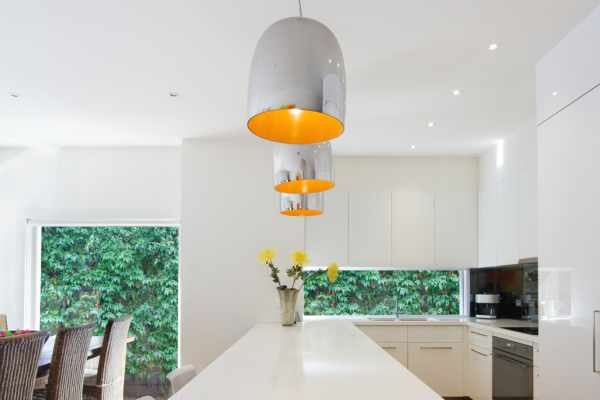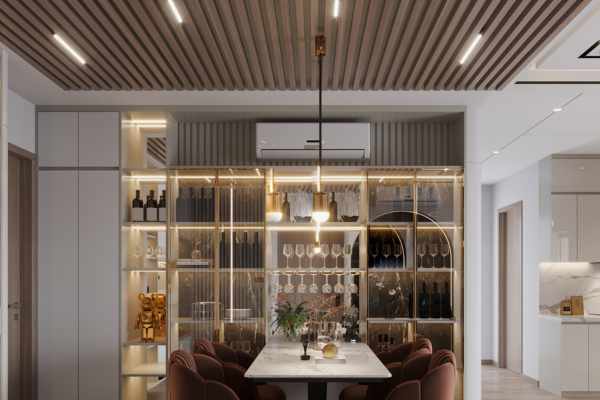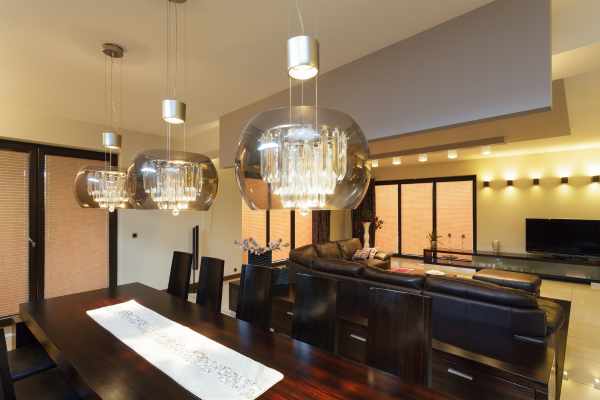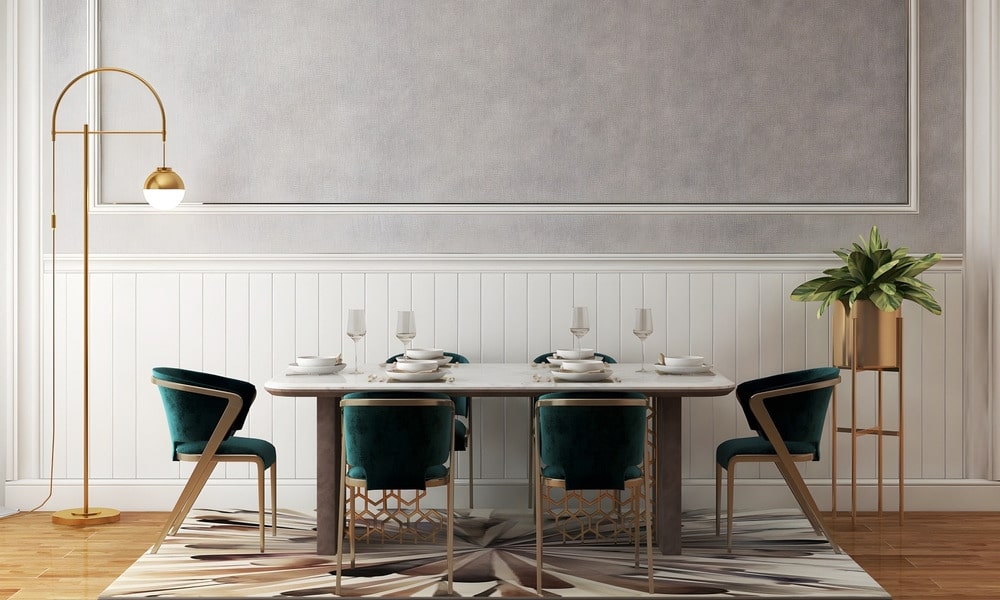Elevate your dining experience with captivating hanging dining room lighting ideas that combines functionality with exquisite design. The perfect lighting fixture not only illuminates your dining area but also serves as a focal point, enhancing the ambiance and style of the space.
From elegant chandeliers to modern pendant lights, there are endless options to suit every taste and interior decor scheme.
Illuminate your dining table with sophistication and flair by choosing a statement piece that complements the size and shape of the room.
Whether you prefer a minimalist, industrial, or ornate aesthetic, the right lighting fixture can tie the entire room together, creating a warm and inviting atmosphere for gatherings with family and friends.
In this guide, we’ll explore a range of hanging dining room lighting ideas to inspire your next interior design project. Discover how different styles, materials, and placement options can transform your dining area into a welcoming haven for memorable meals and meaningful conversations.
Let your creativity shine as you explore the possibilities of enhancing your dining room with stunning hanging lighting fixtures.
1. How do I determine the right size of the dining room light fixture?
Measure the width and length of your dining table in feet, and then add those two measurements together. The sum in inches should roughly equal the diameter of your light fixture in inches. For example, a 6-foot by 4-foot table would benefit from a fixture around 24 inches in diameter.
2. What type of bulbs should I use for my dining room light?
LED bulbs are energy-efficient and come in various color temperatures to suit different atmospheres. Warm white (around 2700-3000 Kelvin) is cozy and inviting, while cooler temperatures (around 3500-4000 Kelvin) can create a more modern ambiance.
3. Can I install a dimmer switch for my dining room light?
Yes, installing a dimmer switch allows you to adjust the brightness of the light according to different occasions, such as intimate dinners or formal gatherings.
4. What style of dining room light fixture works best with my decor?
The style of the fixture should complement the overall aesthetic of your dining room. For example, a modern chandelier can suit contemporary decor, while a traditional pendant light may enhance a classic setting.
5. Can I mix different types of lighting in my dining room?
Absolutely! Mixing ambient, task, and accent lighting can create a layered and versatile lighting scheme. Consider incorporating recessed lighting, wall sconces, or even candles along with your main fixture for added depth and ambiance.
Top 7 Hanging Dining Room Lighting Ideas
1. Size and Scale

When it comes to selecting the right hanging dining room lighting, size and scale are crucial considerations to ensure the perfect ambiance and functionality. The size of the fixture should harmonize with the dimensions of the dining area, neither overpowering nor appearing insignificant.
A general rule of thumb is to choose a fixture that is approximately one-third the width of the dining table. This maintains visual balance and prevents the fixture from overwhelming the space. However, this guideline can be adjusted based on personal preference and the specific design aesthetic of the room.
In terms of scale, the height at which the fixture is hung plays a significant role. It should be positioned in a way that provides ample illumination for dining activities without obstructing the line of sight or creating glare.
Ideally, the bottom of the fixture should hang approximately 30 to 36 inches above the tabletop, allowing for comfortable interaction and conversation among diners while ensuring proper lighting distribution.
Additionally, considering the overall design scheme and architectural elements of the room is essential. The fixture should complement the style of the space, whether it’s modern, traditional, or eclectic, while also serving as a focal point or statement piece.
By carefully assessing size, scale, and aesthetic coherence, the perfect hanging dining room lighting ideas can enhance the atmosphere and functionality of the space, elevating the dining experience for occupants and guests alike.
2. Style and Design

When it comes to hanging dining room lighting, the style and design play a crucial role in setting the ambiance and enhancing the overall aesthetic appeal of the space. One popular style is contemporary, characterized by sleek lines, minimalist designs, and often incorporating.
Materials like glass, chrome, or brushed nickel. These fixtures offer a modern touch while providing ample illumination for dining areas.
For those with a penchant for classic elegance, traditional chandeliers with intricate details, ornate designs, and possibly adorned with crystals or faux candles can bring a timeless charm to the dining room. These fixtures exude sophistication and create a focal point that elevates the entire room’s atmosphere.
Transitional designs blend elements of both contemporary and traditional styles, offering versatility and flexibility to suit various tastes. These fixtures often feature clean lines with subtle embellishments or a mix of materials, making them suitable for a wide range of dining room décors.
Additionally, industrial-style pendant lights with exposed bulbs, metal shades, and raw finishes can add a rustic yet chic vibe to the dining space, perfect for those seeking a more edgy and eclectic look.
Ultimately, the choice of hanging dining room lighting ideas should complement the existing décor, reflect personal style preferences, and provide functional illumination for dining occasions, creating a welcoming and visually appealing environment for both everyday meals and special gatherings.
3. Layered Lighting

Considering hanging dining room lighting, incorporating layered lighting is essential for creating ambiance and functionality. Layered lighting involves combining different types of lighting sources to achieve balance and flexibility in illuminating the space.
One approach is to start with ambient lighting, such as a central pendant or chandelier, to provide overall illumination. This can be complemented with task lighting, such as wall sconces or pendant lights over the dining table, to enhance visibility for activities like eating or reading.
Additionally, accent lighting, like recessed spotlights or picture lights, can be used to highlight architectural features, artwork, or décor elements, adding depth and visual interest to the room. By incorporating dimmers or smart lighting controls.
You can further customize the atmosphere, allowing for adjustments based on different occasions or times of day. Combining these various layers of lighting not only ensures practicality and comfort but also adds a touch of sophistication and style to the dining room.
Creating an inviting space for gatherings and meals. Whether aiming for a cozy ambiance or a formal setting, thoughtful consideration of layered lighting can elevate the dining experience while enhancing the overall aesthetics of the room.
4. Dimmer Switches

When it comes to selecting hanging dining room lighting ideas fixtures, it’s essential to consider both style and functionality. Pendant lights offer a versatile option, ranging from sleek and modern designs to more traditional and ornate fixtures.
Opting for dimmable pendant lights allows for customizable ambiance, accommodating both intimate dinners and lively gatherings. Dimmer switches provide precise control over the brightness level, enabling effortless adjustments to suit various occasions and moods.
For a contemporary aesthetic, consider minimalist pendant designs with clean lines and geometric shapes. These can add a touch of sophistication to the dining space while allowing the flexibility to complement different interior styles.
Alternatively, vintage-inspired pendant lights can evoke a sense of nostalgia and charm, creating a cozy atmosphere perfect for family meals or intimate gatherings.
Installing dimmer switches alongside hanging dining room lighting fixtures enhances functionality and energy efficiency. By adjusting the light output, dimmers can help set the desired mood while also prolonging the lifespan of the bulbs.
Whether aiming for elegance, warmth, or modern flair, incorporating dimmable pendant lights and switches offers a seamless blend of style and practicality, elevating the dining experience for residents and guests alike.
5. Bulb Choice

When it comes to choosing bulbs for hanging dining room lighting, there are several factors to consider in creating the perfect ambiance for your space. Firstly, consider the warmth and color temperature of the bulbs.
Opting for warm white or soft white bulbs with a color temperature around 2700-3000 Kelvin can create a cozy and inviting atmosphere, perfect for dining. Alternatively, cooler temperatures around 3500-4000 Kelvin can provide a more refreshing and modern feel.
Next, consider the brightness of the bulbs. For dining rooms, it’s often best to aim for a balance between functionality and mood-setting. Bulbs with a moderate lumen output, around 800-1200 lumens, are usually suitable, providing enough light for dining tasks while still maintaining a pleasant ambiance.
Additionally, consider the bulb style and shape to complement your dining room decor. From traditional incandescent bulbs to modern LED Edison-style bulbs, there’s a wide variety to choose from to match your aesthetic preferences.
Ultimately, the ideal bulb choice for hanging dining room lighting ideasm lighting will depend on the specific atmosphere you want to create. The size and layout of your dining area, and your personal style preferences.
Experimenting with different bulb options can help you find the perfect balance of warmth, brightness, and style for your dining room.
6. Installation

When it comes to installing hanging dining room lighting. There are several key considerations to ensure both aesthetic appeal and functionality. Begin by selecting the appropriate fixture size and style that complements the room’s dimensions and decor. Measure the height of your ceiling and the distance from the table to determine the ideal placement for the fixture.
Before installation, ensure that the electrical wiring is safely and properly installed. Either by a qualified electrician or following manufacturer instructions if you’re doing it yourself. Consider installing a dimmer switch to adjust the brightness of the light according to different occasions and moods.
When hanging the fixture, make sure it is centered over the dining table to provide balanced illumination. The bottom of the fixture should typically hang around 30 to 36 inches above the table surface for optimal lighting and to avoid obstructing views across the table.
During installation, double-check that the fixture is securely anchored to the ceiling to prevent any accidents or damage. Once installed, test the lighting to ensure it illuminates the dining area effectively and creates the desired ambiance. With careful planning and execution, hanging dining room lighting can enhance the overall atmosphere and functionality of the space.
7. Visual Balance

Creating visual balance in hanging dining room lighting is essential for achieving a harmonious and appealing aesthetic. The placement and arrangement of lighting fixtures should complement the overall design of the space.
While providing functional illumination for dining activities. To achieve visual balance, consider factors such as the size and shape of the dining table. The height of the ceiling, and the style of the room.
One approach to achieving visual balance is to use a single, large focal point fixture, such as a chandelier or pendant light. Positioned directly above the center of the dining table. This creates a sense of symmetry and draws attention to the dining area.
Additionally, incorporating multiple smaller fixtures, such as wall sconces or recessed lights, around the perimeter of the room. Can help distribute light evenly and prevent any one area from feeling too bright or dim. Another technique for achieving visual balance is to vary the heights and styles of the lighting fixtures used.
Mixing different types of fixtures, such as pendant lights with wall sconces or track lighting. Adds visual interest and prevents the space from feeling too uniform. Additionally, adjusting the height of pendant lights or chandeliers can help create a dynamic and layered lighting effect. Further enhancing the overall ambiance of the dining room.
In summary, achieving visual balance in hanging dining room lighting involves careful consideration of the size, placement, and style of fixtures. To create a cohesive and inviting atmosphere for dining and entertaining.
Conclusion
In conclusion, when considering hanging dining room lighting, it’s crucial to strike a balance between functionality and aesthetics. Opting for fixtures that complement the room’s decor while providing sufficient illumination for dining activities is key.
Whether it’s a sleek pendant light, a statement chandelier, or a cluster of stylish fixtures. The choice should align with the room’s size, layout, and overall ambiance. Additionally, incorporating dimmable options can offer versatility for various occasions, from intimate dinners to lively gatherings.
Ultimately, the chosen lighting should enhance the dining experience, creating a welcoming atmosphere that encourages conversation and enjoyment of meals. By carefully selecting the right fixtures, homeowners can elevate their dining rooms into inviting spaces that reflect their personal style and cater to their practical needs.


